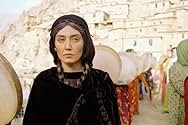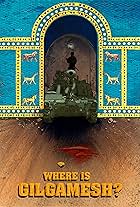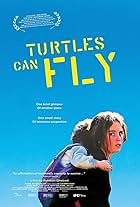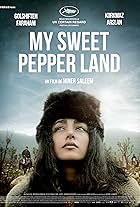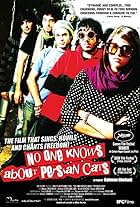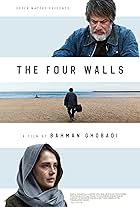Kurdish Persian director Bahman Ghobadi scores again at San Sebastian with the Kurdish language film "Half Moon"
By Alex Deleon image1.jpeg Basic Plot: Mamo, an old and legendary Kurdish musician living in Iran, plans to give one final concert over the border in Iraqi Kurdistan. Rounding up his ten sons, he sets out for the long arduous journey in a derelict bus while plagued by a recurrent vision of his own death at half moon.
Bahman Ghobadi's new Iranian-Kurdish offering, "Half Moon" (Niwemang) was in competition at the 2006 San Sebastian Film Festival. Ghobadi is a favored son here in Donostia where his last film "Turtles Can Fly" was unanimously awarded the Best Film Golden Concha two years ago. The current work, with a lengthy running time of just under two hours, again focuses on the stateless Kurdish community of Iran, and is rich in Kurdish cultural and folkloric material with the usual sparkling, natural performances he invariably draws from his predominantly Kurdish performers, and the huge panoramic landscapes of the barren mountainous Persian terrain which have come to typify his visual style.
"Half Moon" might be characterized as a road movie in which a group of traditional Kurdish musicians consisting of Maestro Mamo and his ten sons, set out in a school bus from Tehran for the border area where Iran abuts against both Turkey and Iraq, hoping to stage a musical event with traditional instruments for their Kurdish brethren over the border in Iraq -- now a possibility thanks to the recent fall of the Saddam Hussein regime. At the border they run into unpleasant military confrontations with near disastrous results for their treasured project. Mamo, (Ismail Ghaffari) the handsome old man who is the leader of the delegation, is so distraught that he gets into the coffin where the Kurdish instruments have been concealed and asks to be buried alive. At the touchy border crossing they are met by a beautiful mysterious young woman who offers her assistance in getting them past the ominous border guards.
"Half Moon" , while dealing with the precarious position of Kurds in this strife torn part of the world, is much lighter in tone than his previous "Turtles Can Fly" and is almost a comedy, but with serious political overtones. The beauty at the border is played by Golshifte Farahani. currently Iran's most popular leading lady of the silver screen. With her looks and on screen charisma its not hard to see why. She reminds me of a cross between Italy's Monica Belluci and Pakistan's former president Benazir Bhutto. With Iran's growing presence on the world film scene it seems to be only a matter of time before this striking actress is discovered by some Western director and breaks out into an international career. Golshifte was present at the press conference and speaks fluent English, so that language would be no hindrance. But if Hollywood gets their hands on her they'll probably change her name to something that sounds less shifty and easier to remember.
PS: Golshifte later had to leave Iran after defying the clerics and has indeed broken out into an international career, without changing her name, notably in films by director Ridley Scott. Unfortunately not yet in the kind of leading roles that would properly showcase the talents and beauty of this remarkable Iranian actress, now 33. In January 2012, it was reported that Golshifteh would not be welcome back in Iran after posing nude in a French magazine. Britain's Daily Telegraph reported that government officials told Golshifteh that "Iran does not need actors or artists like you. You may offer your artistic services somewhere else". This she continues to do while having taken up residence in France. Director Ghobadi has also been forced into exile after his underground film "Nobody Knows About Persian Cats" was viewed as subversive by the reigning powers in 2009. ------------------------------------------------------







